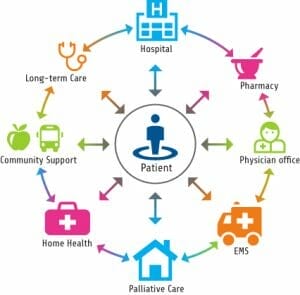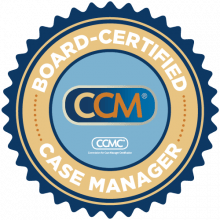Transitions of Care occur when a patient moves from one setting to the next. Transitions are the riskiest times when patients can fall through the cracks of the healthcare system and cause setbacks It is important to take the time to identify barriers before the transition occurs to help prevent problems. All members of the healthcare team, including the patient and their caregivers, need to be diligent during transitions of care to reduce gaps in care and ensure the patient transition safely.
In this week’s post, I share 16 tips that can help patients have safe transitions of care.
- Members of the healthcare team need to remember that the patients and their caregivers are members of the healthcare team. They should be included in the development of the plan of care. The goal of the plan of care should is to meet the patient’s goals so taking the time to bring all parties together is important.
- When the patient is ready to move to the next level of care, a transition of care plan should be developed. This will help all understand the next steps are and identify barriers or challenges beforehand so strategies can be put in place before the transition occurs.
- When in the hospital, patients should work with their healthcare team to review the next steps in their care. Patients should understand the plan of care as well as the transition of care plan. Patients the caregiver should be asked to identify concerns they think could be a problem as they know their home situation and what those barriers are.
- In most organizations, doctor and the treatment team will do daily rounds. Patients and their caregiver should prepare questions and be part of the discussion. In most situations, there is usually a nurse case manager, a social worker or a discharge planner who is part of the team. They are the professionals who will work with the patient and their family to plan the transition of care. They are the best person to discuss the plan with, share what your concerns are and who you will follow-up with as you transition to the next level of care. Any concerns should be brought up and discussed.
- Get the name of a contact person you can reach once you leave the facility. This is important in case issues arise, you have someone to follow-up with.
- Once home, be aware of how you are doing. Make sure what was supposed to take place actually happens. If you were supposed to have home care or receive equipment and it did not arrive, call the contact person who worked with you to plan your plan your discharge. Let them know what went wrong so they can follow up. Most hospitals usually do a follow-up call to see how you are doing through the transition process. Take this call and be honest about your experience. This is a chance to share information that can help improve the process.
- Keep your follow-up appointments. When you go to those appointments, ask your doctors if they have gotten a discharge summary from your hospital experience or reports from specialists who might have seen you. Many doctors have access to the hospital records through their electronic health records. This allows them to access records so they are aware of what happened in the hospital or access reports from specialists who they may have referred you. Having this information is critical to ensure continuity of care between providers. Ask if your doctors if they have access to these records. If not, they can call them or you can gather this information. If you get the information, make a copy for your binder and give a copy to each of your providers. When everyone has the information, your care will be coordinated and duplication and fragmentation can be reduced.
- Let the doctors caring for you know if your plan of care is not meeting your needs. Let them know if you need anything. Don’t be afraid to be open and honest with the doctors. They will only know things if you tell them. Keep in mind, you are only ‘constant’ on your team. So keeping each member of the team informed about the care you received, issues and challenges you are facing is up to you and your caregiver to communicate.
- Keep your own records. Doing so will keep you organized and allow you to see gaps in care that you can report. Remember an informed patient is critical to good outcomes.
- Update your list of medications. Many times the doctors treating you in the hospital may change you’re your medications. So it is important that you update your medication list so it is current. When you go to your follow-up visits, show your medication list to all of your doctors so they can review and confirm the medications you are taking. Sometimes needed medications may have been dropped inadvertently. Confirming your current list of drugs with each of your doctors will help to ensure you are on the right medications. If you are started on a new drug on a follow-up appointment this is another time to update your list. Let the doctors know if you are not tolerating the new medications so if problems they are aware. Again, you are the key to keeping your team informed.
- If you have concerns about your plan of care, unsure of your diagnosis, or not clear the plan is meeting your needs, you may want to get a second opinion. Working with your primary care doctor and your insurance company can help make this happen.
- Keeping in close contact with your insurance company is important. Each insurance company has rules that need to be followed. If you have clinical questions regarding your care, you can call the customer service number on your card and ask to talk to a nurse case manager. The nurse case manager should be able to assist you to understand your options. If you want a second opinion, the nurse case manager can help you find a doctor who is in your network.
- To make the 2nd opinion visit successful, it will be important to gather your most recent medical records and diagnostic test. These records will give the new doctor insight into your care.
- Keep in mind, you have a right to your medical records. Collecting the as you move through the system is important. A good way to check if you have all your records is to make a list of your doctor’s appointments and any hospitalizations. You should have a note for each visit. If you don’t have your records, make a list of what you are missing and work to collect them.
- Follow your plan of care and do the things you are supposed to do. Keeping a diary can help you with your self-care activities. If you are supposed to change your diet, take your medications at certain times, monitor your weight, blood pressure, glucose or other things, keeping a record in your journal will help you and your doctors see changes or patterns. If you are on active treatment keep notes on how you feel is important. Note side-effects or changes that are unusual. This information gives your treatment team a way to identify issues and challenges early so setbacks can be avoided. Realize that no detail is too small to report.
- Make notes in your journal about questions you want to review when you see your doctors on follow-up.
Resources:
Here are some resources that can help all members of the healthcare team improve transitions of care.
- National Transition of Care Coalition: This page has some good resources for patients as well as healthcare professionals. Visit the site at http://www.ntocc.org
- Discharge planning Rights: Hospitals and other inpatient organizations must follow certain rules regarding discharge planning. This site can give insights into these rules. https://www.medicareinteractive.org/get-answers/medicare-covered-services/hospital-services-inpatient-part-a/your-right-to-hospital-discharge-planning
- Hospital Discharge Planning: A Guide for Patients and Families. This site has some good information patients and caregivers can use to understand the discharge planning process. https://www.caregiver.org/hospital-discharge-planning-guide-families-and-caregivers
- Being a patient takes work. I hope these tips help you and your caregivers be an active participant in your health and healthcare.
Have a good week!













Dont forget the DMM. Choosing someone ahead of time to be a Designated Medication Manager can be a lifesaver when medication is changed or when leaving the hospital with pain pills http://patientsafetyadvocate.org/resources/PULSE_DMM_02.22wlogo.pdf